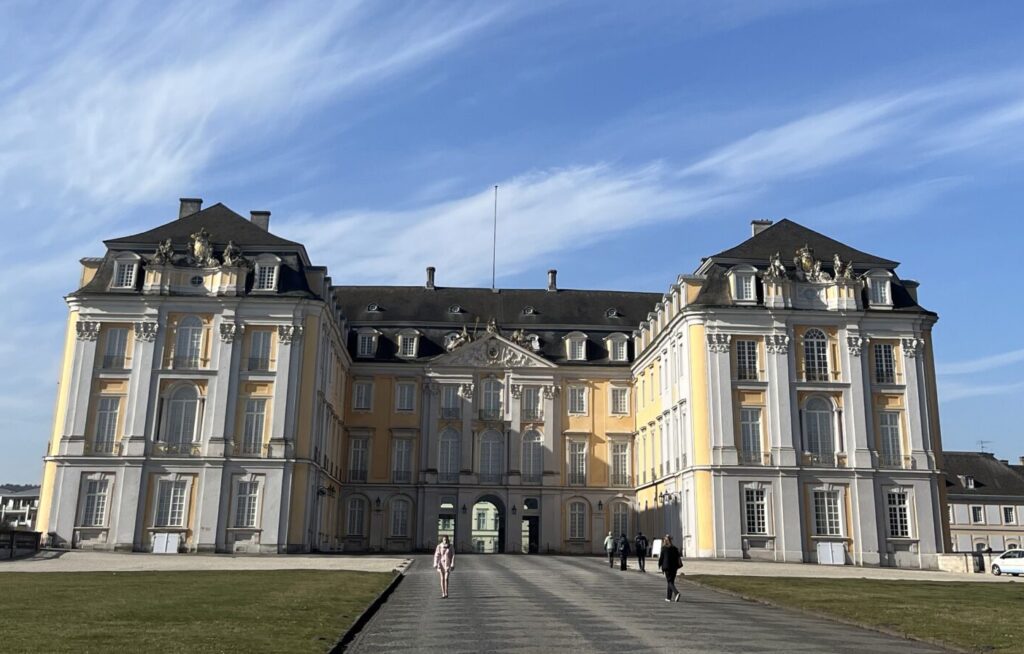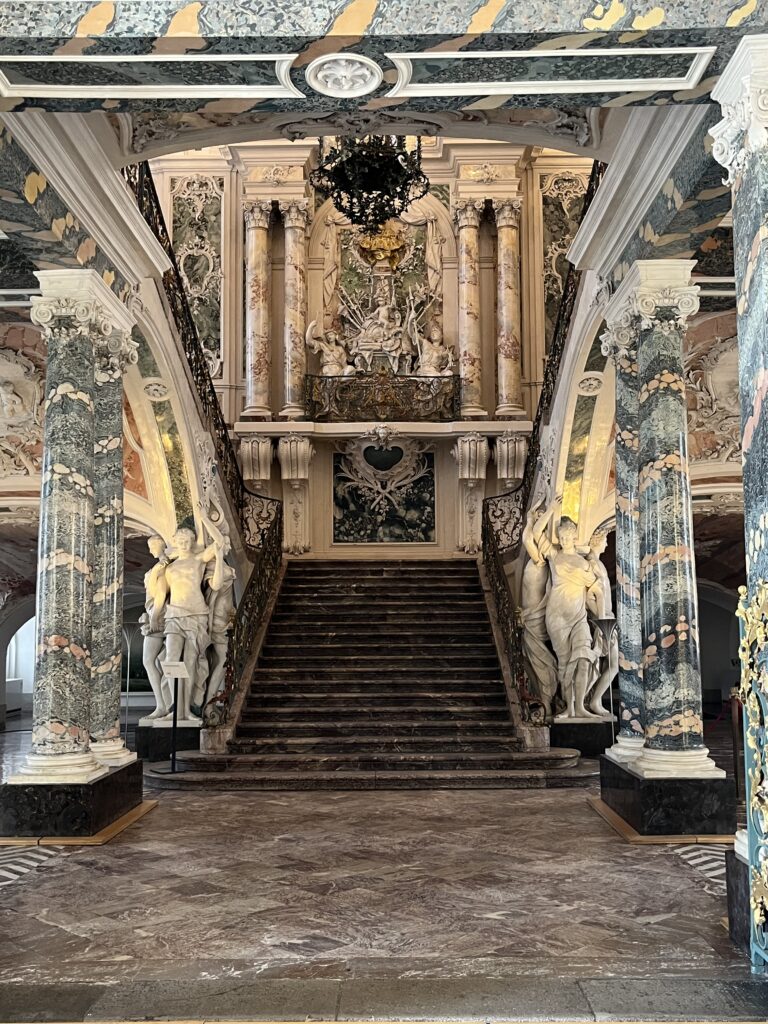Brühl is Cool
Today, some friends and I accompanied the great Johannes Stahl on a day trip to Brühl, a village about halfway between Bonn and Cologne. We toured Augustusburg Palace, the Max Ernst Museum, and the gardens between Augustusburg Palace and Falkenlust Hunting Lodge.
Our first stop at Augustusburg Palace included a guided tour inside the building. It was built from 1725 to 1768 and funded by Archbishop and Prince-Elector Clemens August of Bavaria. From the outside, the palace looks somewhat like the University of Bonn. Its very recognizable yellow and white color scheme contrasts with its dark grey roof. The palace bears a Bavarian coat of arms to represent the Prince-Elector’s heritage.

The palace is one of the first examples of Rococo, or Late Baroque, Architecture in Germany. This style of architecture is associated with pastel colors and lots of curves to give the impression of dynamics and movement. It’s very intricate and designed to impress and overwhelm an observer with detail. This type of architecture is on full display inside the Palace, where molded gilded ceilings and gilded leather wallpaper cover several rooms. The Palace has a grand staircase constructed of different colored marble stones, detailed with fresco paintings all over the walls and ceilings. The staircase was used by August to receive guests and hold ceremonies. The palace looked very similar to the Versailles Palace, with its extensive gardens and gated front entrance on the exterior, and its ornate gilded interior.

The next place we visited was the Max Ernst Museum. Ernst was a German 20th century sculptor and painter who fled to the US to escape nazi occupation during the second World War. The museum features much of his early work. The building itself was converted from a social venue frequented by Ernst in his early life, which now holds many of his sculptures and paintings. The building also includes a glass pavilion holding a reception area and a gift shop.
After the visit to the museum, a few of us returned to the palace grounds to walk around the gardens and see the Falkenlust Palace at the other side of the estate. This palace was constructed around the same time as Augustusburg Palace, originally designed as a hunting lodge. Clemens August enjoyed hunting and falconry. The building is built in a similar style to its counterpart, although smaller and less detailed. The palace is flanked by two smaller buildings, originally intended to house August’s falcons.
Overall, I’m really glad to have taken this trip to Brühl. I didn’t know much about it beforehand but it was really interesting to learn about the Palaces and to visit the Ernst Museum. It’s only about 10 minutes away from Bonn by train, so I would definitely recommend it as a day trip destination.
-Ben Peterson
Augustusburg Palace. (n.d.). Schlösser Brühl. https://www.schlossbruehl.de/en/augustusburg-palace/
Architecture | Max Ernst Museum Brühl des LVR. (2025). Maxernstmuseum.lvr.de. https://maxernstmuseum.lvr.de/en/museum/baugeschichte/baugeschichte_1.html
Castles of Augustusburg and Falkenlust at Brühl. (2022, October 17). UNESCO. https://whc.unesco.org/en/list/288
